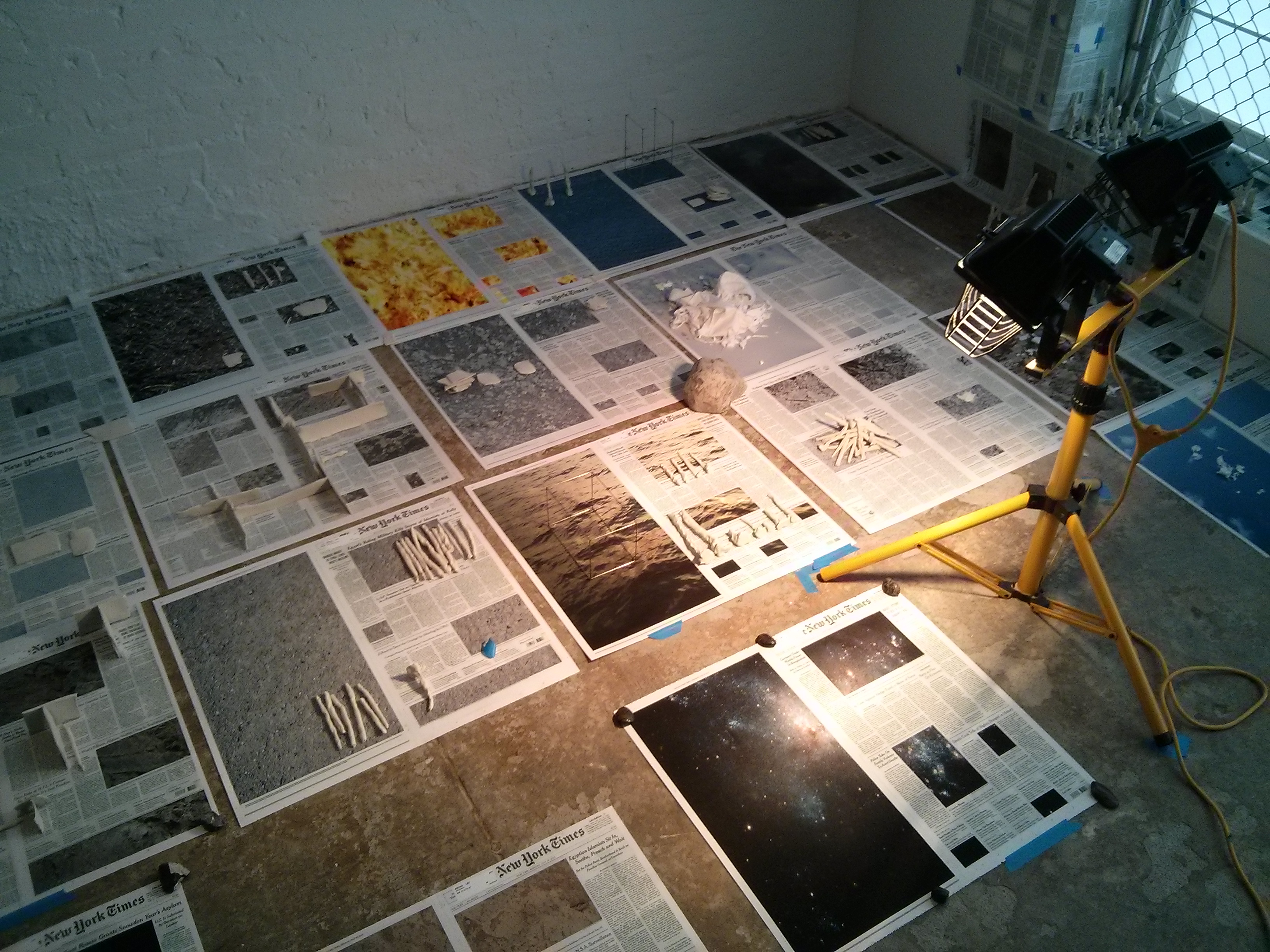
CORE COURSES in Visual Studies
VLST 101. Eye, Mind, and Image. (C) Hatfield/Leja.
Fulfills General Education requirements in Sectors IV (Humanities and Social Sciences) or VII (Natural Science and Mathematics). This course is required of all Visual Studies Majors (Stage 1)
Visual Studies 101 provides an introduction to the collaboration of eye, mind, and image that produces our experience of a visual world. How and what do we see? How do we perceive color, space, and motion? What is an image? Does seeing vary across cultures and time? What can art tell us about vision? Is there a 21st-century form of seeing?
This course combines different approaches to the study of vision, drawing from psychology, cognitive science, philosophy, history of art, and fine art. Professors representing two or three disciplines present lectures that demonstrate the methods of their disciplines and draw connections across fields.
VLST 102. 2 Dimensions: Forms and Meanings. (C) Bendtsen/Hyland
This course is required of all Visual Studies Majors (Stage 1 or 2)
This course will introduce students to the theory and practice of image making, focusing on the development of observational skills and analytical thinking.
We will look at conventions of pictorial representation across time and cultures; discuss types of visual information and modes of formal language; explore visual narrative techniques; and seek to expand our understanding of the role images play in our culture.
VLST 103. 3 Dimensions: Time and Space. (C) Freedman/Neighbor
This course is required of all Visual Studies Majors (Stage 1 or 2)
Through studio projects, readings and class discussion, this class will begin to address, both conceptually and physically, basic 3D structures and translations between 3D and 2D, as well as materiality, experiential phenomena, light, and time-based processes.
The interconnection between mediums in our cultural climate employs a wide range of tools, processes, and ideas. It is imperative that visual studies students recognize and think through these connections. The work produced and ideas confronted in this class will facilitate discussions and constructive criticism on the fundamentals of space and time via the experiential, conceptual, and the formal as essential elements of meaning.
VLST 301. What is Visual Studies?. (C) Leja or Hatfield.
Prerequisite(s): VLST 101 or Instructor Permission. This course is required of all Visual Studies Majors (Stage 2)
Visual Studies 301 is a seminar-format course that challenges students to develop independent ideas about how the eye, the mind and the image that is created therein, all work together to inform our conception of the world at large. Rather than present a unified viewpoint, the course asks the question, "What is visual studies?" by examining parallel and sometimes antagonistic approaches to the ways that human beings understand sight and the concept of visuality. Over the course of the semester, students will discuss and write about various approaches to vision, examining this contested field through the lenses of several disciplines -- including psychology, philosophy, and art history. By parsing and assimilating diverse ideas, students will decide for themselves what are the most pertinent and relevant approaches to the various avenues of research that present themselves in the emerging interdisciplinary field of Visual Studies.
VLST 303/503. The Rise of Image Culture: History and Theories. Staff.
This course may be applied to Visual Studies (Stage 2 or 3, Sector B) major requirements.
Images are ubiquitous in the cultural life of the 21st century, yet only two centuries ago they were rare. When and how did pictures come to permeate daily life? How has ordinary experience--psychological, social, cultural, intellectual--changed as a result? This seminar addresses these questions through close reading of influential historical and theoretical writings about the rise of image culture and its effects, including Benjamin, Debord, McLahan, Mitchell.
VLST 305/505. What is an Image? Verstegen.
This course may be applied to Visual Studies (Stage 2 or 3, Sector A) major requirements.
The course explores various concepts of images. It considers natural images (as in optics), images as artifacts, virtual images, images as representations, and works of art as images. Themes to include: the image controversy in cognitive science, which asks whether some cognitive representations are irreducibly imagistic; the question of whether some images resemble what they represent; the development of the concept of the virtual image and of three-dimensional images; the notions of pictorial representation and non-representational images in art. Readings from C. S. Peirce, Nelson Goodman, Robert Hopkins, Dominic Lopes, W. J. T. Mitchell, John Kulvicki, and Mark Rollins, among others.
VLST 395. Senior Project. (E) Freedman/Verstegen.
Prerequisite(s): Permission of Instructor Required. This course is required of all Visual Studies Majors (Stage 4)
VLST 399. Independent Study. Staff.
VLST 599. Independent Study. Staff.
STAGE 2 Courses in PSYC, PHIL, ARTH, FNAR, ARCH
PSYCHOLOGY
VLST 211/PSYC 111. Perception
VLST 212/PSYC 311. Research Experience in Perception
VLST 217/PSYC 217. Visual Neuroscience
PHILOSOPHY
VLST 221/PHIL 244. Philosophy of Mind
VLST 222/PHIL 330. Philosophy of Perception
VLST 223/PHIL 223. Philosophy and Visual Perception
HISTORY OF ART
VLST 232/ARTH 102. Renaissance to Contemporary Art
VLST 233/ARTH 103. East Asian Art and Civilization
VLST 234/ARTH 104. South Asian Art
VLST 235/ARTH 235. Visual Culture of the Islamic World
VLST 236/ARTH 294. Contemporary Art
FINE ART
VLST 250/FNAR 250. Introduction to Printmaking
VLST 251/FNAR 271. Introduction to Photography
VLST 252/FNAR 145. Sculpture Practices
VLST 253/ FNAR 123. Drawing 1
VLST 260/FNAR 150. Photography Practices
VLST 261/FNAR 061. Video 1
VLST 264/FNAR 264. Art, Design and Digital Culture
VLST 265/FNAR 340. Digital Photography
ARCHITECTURE
ARCH 102. Visualization I: Representation
ARCH 201. Visualization II: Fabrication
STAGE 3 ELECTIVE COURSES
Stage 3 course selections in your sector of concentration should made in consultation with your Sector Adviser and approved by the Visual Studies Program Director. These course selections are meant to create specialized depth in the chosen area of concentration to complement the breadth offered by the core curriculum. Many of the courses above may be applied to Stage 3, but several courses without VLST cross-listings are also options.

 Visual Studies
Visual Studies